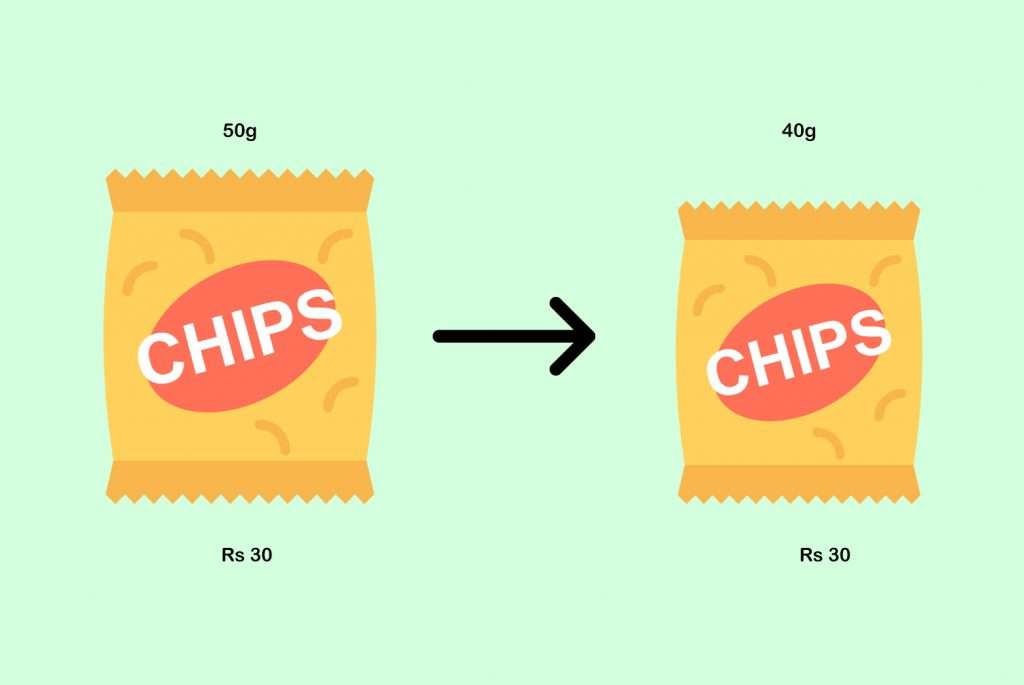According to the National Statistic Office data released in April 2022, the retail Inflation in India stood at a staggering 7.79%, highest in the last 8 years. But how many of you know about shrinkflation-a hidden inflation that is eating up our pocket? Have you noticed the soap brand VIM has reduced its 10 rupee bar size from 155gm to 135gm?
Decoding Shrinkflation
Shrinkflation, coined by a British economist Pippa Malmgren in 2009, is the practice of cutting down the size or quantity of a product, while the rate of the item remains the same or slightly increases-Less quantity but same price. This practice has now been adopted by several companies in India and is most common in the food and beverages industry.

In India, the hike in fuel price, edible oils, food grains, laminates and corrugated boxes for making biscuits and soap etc. are some of the major reasons that have forced fast moving consumer goods companies to adopt shrinkflation in their process of reducing input cost. FMCG companies in our country like Britannia Industries, Dabur India Ltd, Hindustan Unilever, Nestle India and Coca Cola have adopted this method to beat the “economy villain”-inflation, which will otherwise cut down their profit.
For example, Popular snack company ,Haldiram’s, reduced the size of the 10 rupees Aloo Bhujia packet from 55gm to 42gm for the same selling price.
Another example for shrinkflation is a 10 rupees packet of Parle-G biscuits now weighs 110gm instead of 140gm.
A new method of adjusting to inflation followed by FMCG companies is offering bridge packs. The bridge pack strategy refers to offering a wide range of products between its highest and lowest price . This will help the customers to afford branded products at lower price and at the same time will enable the companies to retain their customers and increase their sales.
An example of introducing bridge packs is Hindustan Unilever introducing a new size of Lifebuoy soap for Rs.16 which is priced between Rs.10 and Rs.35.
Should we be worried?
Most often we, as consumers, are too focused on the cost of a product that we rarely notice how the quantity, quality and size of these products have varied over time . With the prices of commodity products skyrocketing, we must be aware of these practices adopted by the companies to maintain their profit margin. Small variations in quantity and quality tend to go unnoticed and thus people still continue to shop for their favourite branded products, while in fact they are paying for less than the usual.
Companies have no other choice but to adopt such practices to combat spiraling inflation that eats into their margins. As a consumer, we may still want to purchase these products, but it is good to be aware of the hidden costs in our favourite products, because in the end all this leads to the diminishing value for our hard earned money.

Research & Content Team, Saints & Masters



